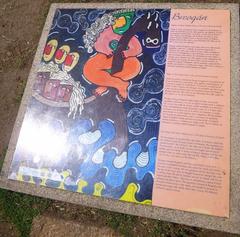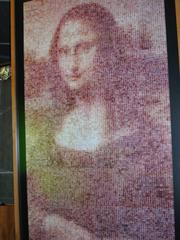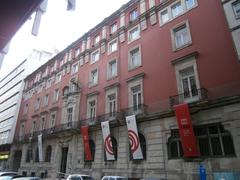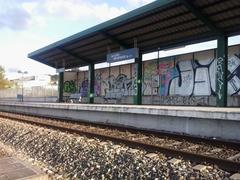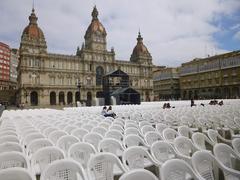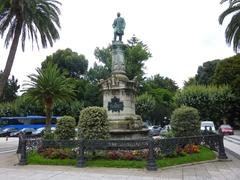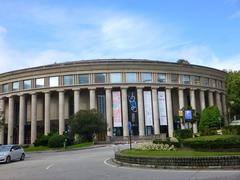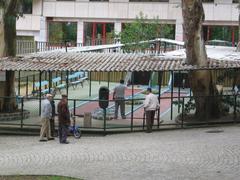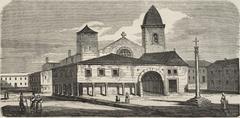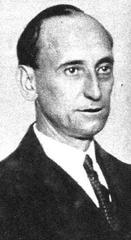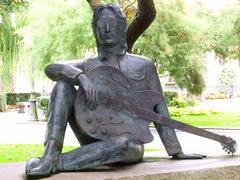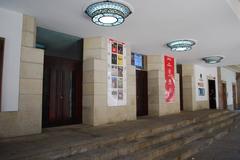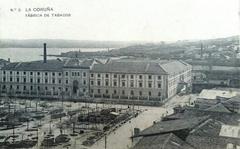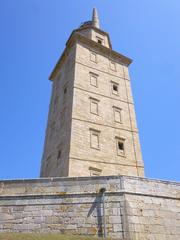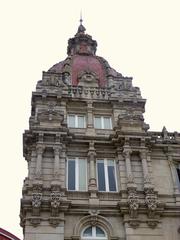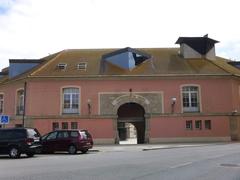
Teatro Circo Emilia Pardo Bazán: Visiting Hours, Tickets, and Travel Guide to A Coruña’s Historic Cultural Landmark
Date: 04/07/2025
Introduction
The Teatro Circo Emilia Pardo Bazán, though no longer standing, remains an emblematic symbol of A Coruña’s rich artistic and social heritage. Named after one of Galicia’s most influential literary figures and early feminist advocates, this historic theater once stood at the heart of the city’s cultural life, hosting innovative performances and welcoming diverse audiences. Today, its legacy endures through commemorative plaques, local museums, and the ongoing vibrancy of A Coruña’s arts scene.
This guide provides a detailed historical overview, architectural insights, and practical visitor information for those interested in exploring the legacy of Teatro Circo Emilia Pardo Bazán and related historical sites in A Coruña. Whether you are a history enthusiast, a traveler, or a lover of the arts, this article will help you appreciate the enduring cultural significance of this lost yet celebrated venue (Academia.edu, Spain.info, Wikipedia).
Table of Contents
- Introduction
- Historical Overview
- Visiting the Former Site and Nearby Attractions
- Frequently Asked Questions (FAQ)
- Visual Gallery
- Further Reading and Resources
- Conclusion
Historical Overview
Foundation and Naming
The Teatro Circo Emilia Pardo Bazán was inaugurated in 1903 and named to honor Emilia Pardo Bazán (1851–1921), a pioneering Galician author and tireless advocate for women’s rights. This dedication was a progressive gesture, making the theater not only an entertainment venue but also a symbol of social advancement and cultural ambition in A Coruña (gl.wikipedia, elidealgallego.com).
Architectural Features
Designed by architect Atanasio Anduiza, the theater drew inspiration from major European venues, notably Milan’s Teatro alla Scala. Its neoclassical façade featured Corinthian columns and a grand portico, while the innovative cast-iron interior allowed for a flexible auditorium, easily adapted for both theatrical and circus performances. The space could seat up to 2,000 people, making it the largest venue in A Coruña at the time (elespanol.com, xornaldacoruna.gal).
Cultural and Social Impact
From its opening, the Teatro Circo Emilia Pardo Bazán was a dynamic hub for drama, opera, circus acts, and, notably, early cinema. It played a pioneering role in bringing film to Galicia, following the tradition started by its predecessor, Circo Coruñés, which hosted the first public film screening in 1896. The theater’s construction and operation were community efforts, reflecting the aspirations of A Coruña’s bourgeoisie. Its rivalry with the municipal Teatro Principal spurred competitive programming and illustrated the evolving relationship between private and public cultural investments (elidealgallego.com).
Decline and Demolition
Despite a vibrant decade, the theater struggled with economic challenges, competition, and foundational instability. It closed in 1912 and was demolished in 1915. A subsequent fire in 1919 marked the definitive end of the building. Nevertheless, its legacy influenced the development of later venues such as Teatro Colón and continues to inspire cultural initiatives in A Coruña today (gl.wikipedia).
Visiting the Former Site and Nearby Attractions
Location and Accessibility
The original site of the Teatro Circo Emilia Pardo Bazán is located near Avenida da Mariña, close to the city’s port authority. While the building no longer stands, the area is easily accessible on foot and by public transit. The space is open to the public at all hours, forming part of A Coruña’s vibrant urban landscape (Spain.info).
Memorials and Museums
- Heritage Plaques: Informational markers at the former site provide historical context for visitors.
- Museo Municipal de A Coruña: Exhibits on local cultural history, including the performing arts, help contextualize the theater’s importance.
- Casa Museo Emilia Pardo Bazán: This museum, dedicated to the theater’s namesake, offers insights into her life and influence (Spain.info).
Walking Tours and Cultural Trails
Guided walking tours of A Coruña’s historical center often include the theater’s former site as a stop, along with other important landmarks such as the Plaza de María Pita, the Old Town (Ciudad Vieja), and the Teatro Colón. These tours offer a comprehensive view of the city’s architectural and artistic evolution.
Nearby Attractions
- Tower of Hercules: UNESCO World Heritage lighthouse and iconic symbol of the city.
- Plaza de María Pita: Main square known for its historical significance and vibrant events.
- Teatro Colón: The city’s main performing arts venue, continuing the tradition of cultural programming.
Frequently Asked Questions (FAQ)
Q: Can I visit the Teatro Circo Emilia Pardo Bazán today?
A: The original theater no longer exists, but the site is accessible as part of A Coruña’s urban area.
Q: Are guided tours available?
A: Yes, many local walking tours include the theater’s former site and its history.
Q: What kind of performances were held at the theater?
A: The venue hosted drama, opera, circus acts, and early cinema screenings.
Q: Is the area accessible for visitors with mobility needs?
A: Yes, the historic center and the site are pedestrian-friendly and accessible.
Q: Are there museums dedicated to Emilia Pardo Bazán?
A: Yes, the Casa Museo Emilia Pardo Bazán offers exhibits about her life and works.
Visual Gallery
 Caption: Historic image of the theater’s grand neoclassical façade.
Caption: Historic image of the theater’s grand neoclassical façade.
 Caption: The theater’s historic site near Avenida da Mariña, integrated into modern A Coruña.
Caption: The theater’s historic site near Avenida da Mariña, integrated into modern A Coruña.
Further Reading and Resources
- Breve historia del teatro circo Emilia Pardo Bazán de La Coruña – Academia.edu
- A Coruña Destination Guide – Spain.info
- Teatro Circo Emilia Pardo Bazán – Wikipedia (GL)
- Emilia Pardo Bazán Biography – Biografías y Vidas
- Cultural and Historical Insights – El Ideal Gallego
- A Coruña Tourism Board Official Website
Conclusion
Though the Teatro Circo Emilia Pardo Bazán is no longer part of A Coruña’s skyline, its innovative spirit and commitment to cultural progress remain woven into the city’s identity. The theater’s story—its architectural ambition, its role as a cultural and social hub, and its dedication to honoring a trailblazing woman—continues to inspire both residents and visitors. By exploring the historic site, engaging with local museums, and participating in guided tours, you can discover the enduring legacy of this landmark and deepen your appreciation for A Coruña’s vibrant cultural tapestry.
We encourage you to plan your exploration of A Coruña’s historical treasures with updated resources and to enhance your visit with the Audiala app, which provides curated guides, event updates, and exclusive content about the city’s cultural heritage.



